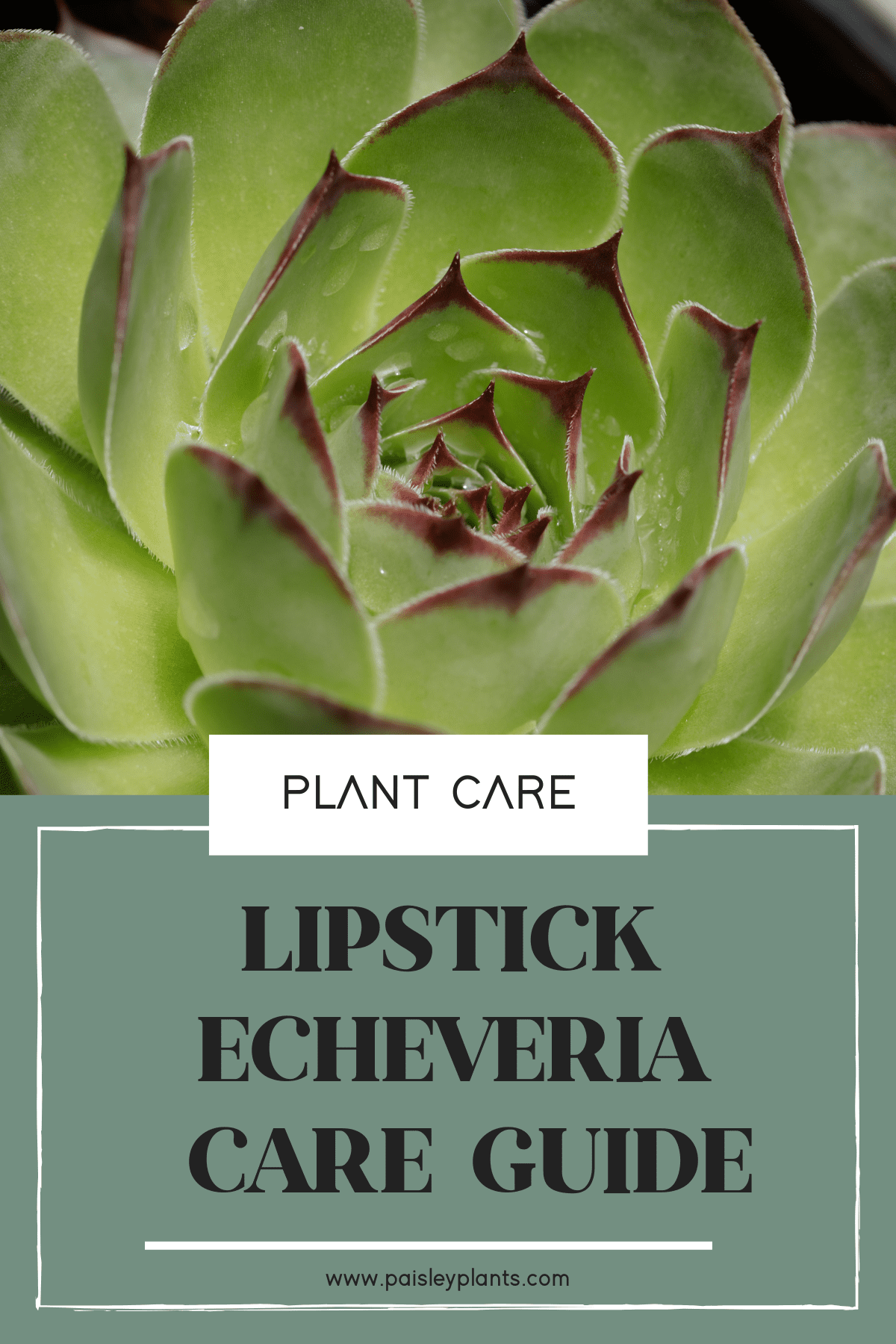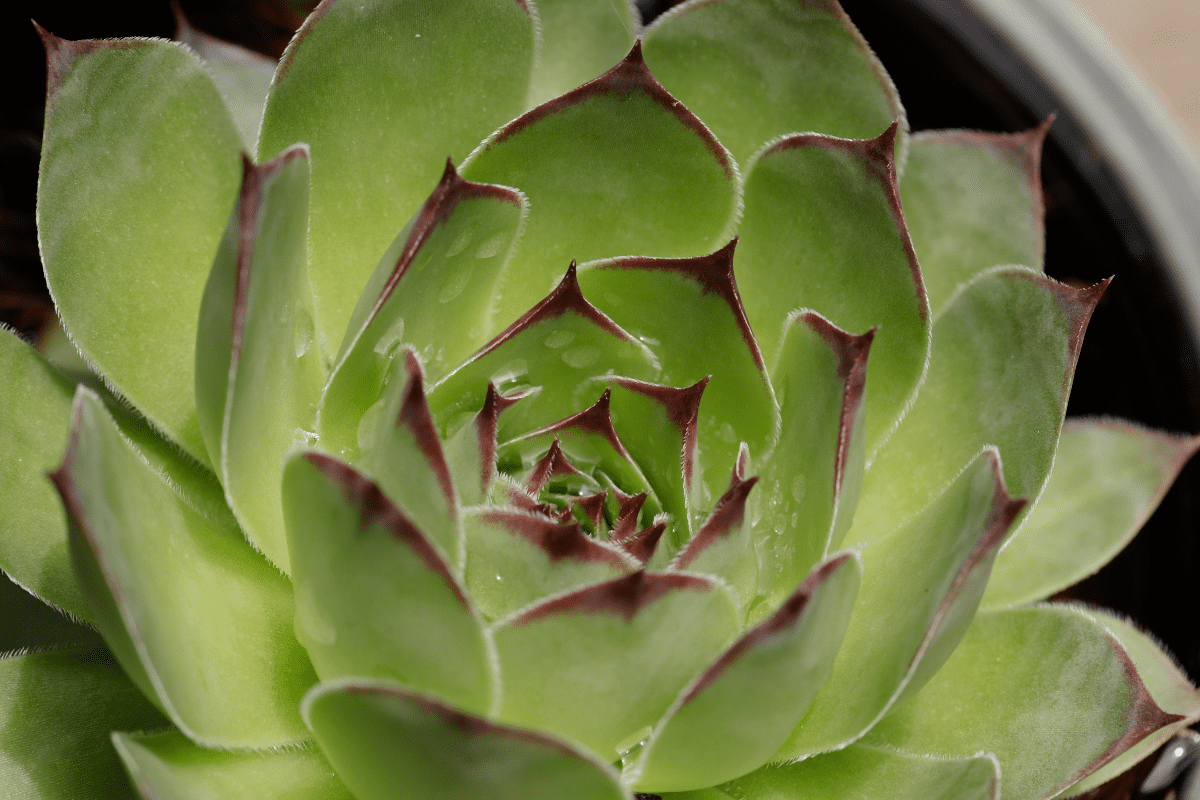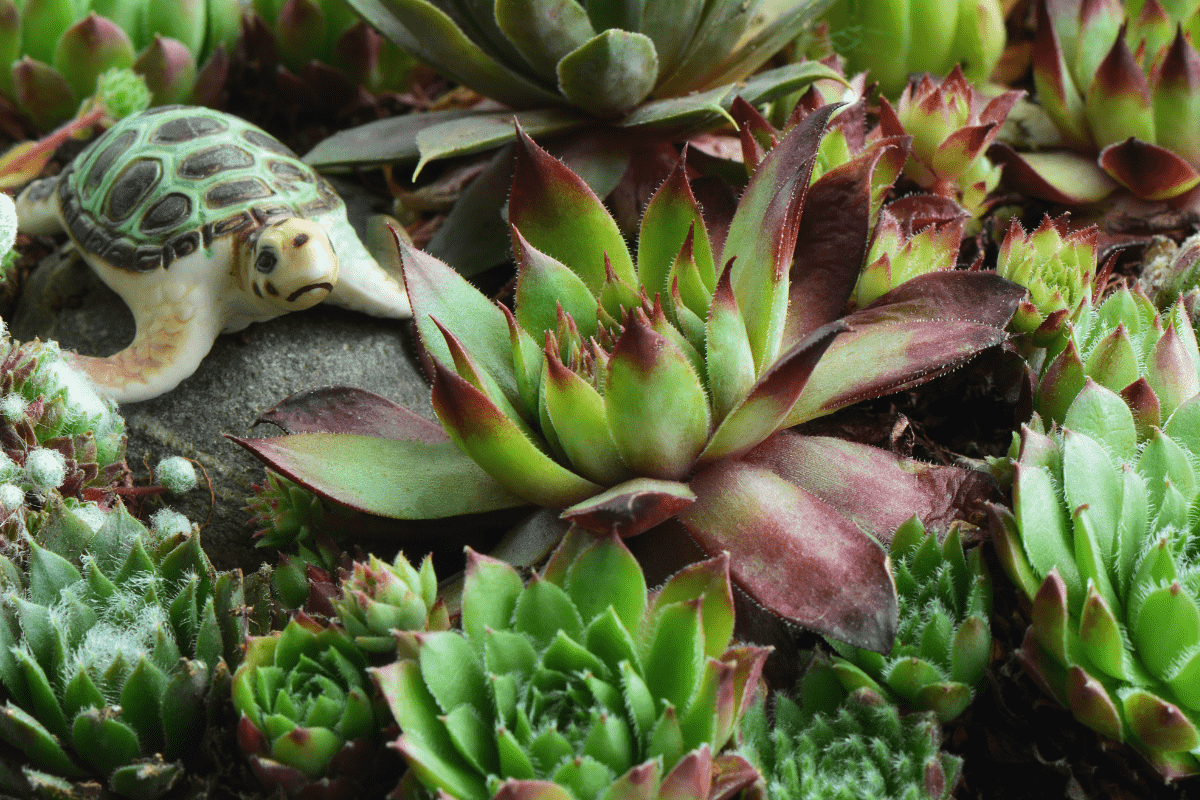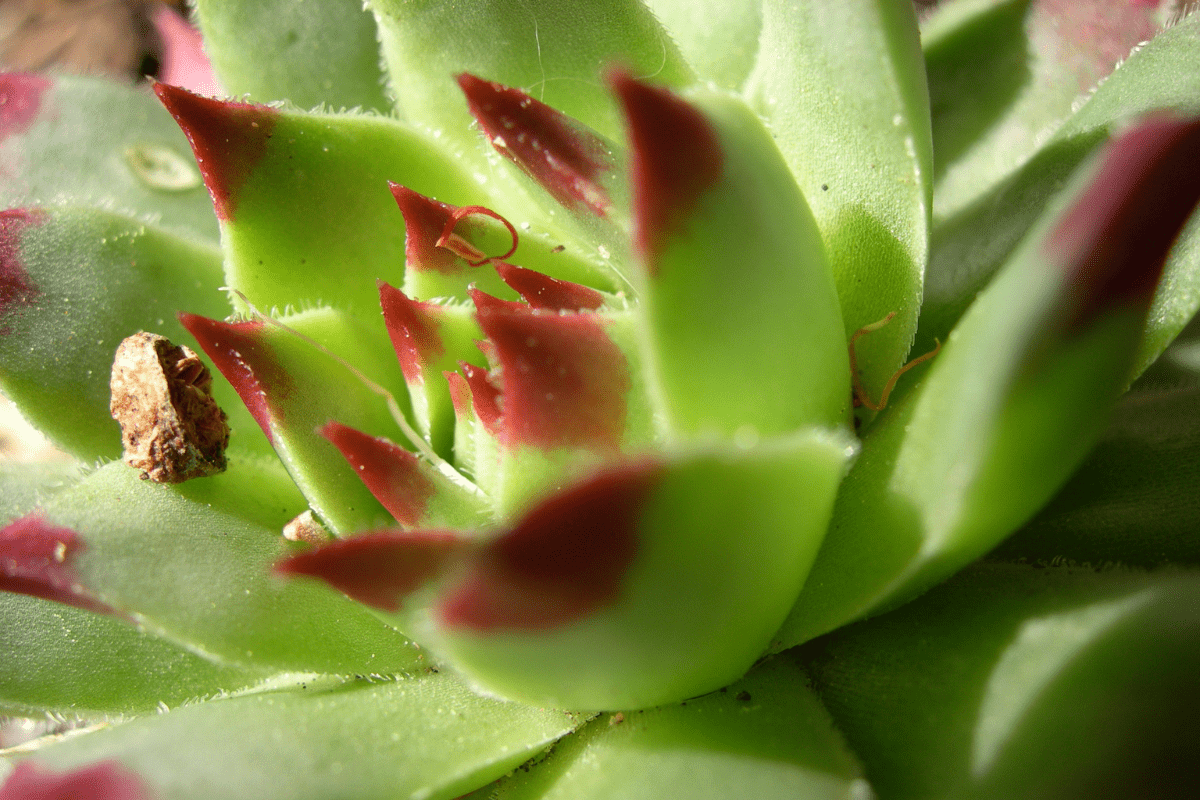Beauty comes in all shapes and sizes – even in the plant world. Let me introduce you to the Lipstick Echeveria, an easy to care for stemless succulent, not to be confused with the Aeschynanthus (Lipstick Plant).
There are many varieties of Echeverias. This particular plant is also called the Molded Wax Agave and the “Red Edge” Echeveria.
Table of Contents
What Is A Lipstick Echeveria

This post includes affiliate links.
The Lipstick Echeveria is characteristic for its fat, crisp, green triangular leaves. It is no secret where the Lipstick Echeveria got its name as the tips of the leaves look like they were dipped in red lipstick making it a real beauty!
This plant forms beautiful solitary rosettes and always has a main or “mother” rosette. This will always be the case, even when your plant is old. It will produce offsets or “babies” frequently which sprout around the mother, which also add to its appeal.
This beauty is native to the rocky regions of Mexico and Central America. They are grown both as houseplants and outdoors and are favorites of gardeners and houseplant owners due to their eye-catching appearance.
Toxicity
Lipstick Echeverias are not toxic to animals or humans making them one of the most popular succulents to grow at home. They also make great office plants due to their low maintenance and non-toxic properties.
Lipstick Echeveria Plant Care Tips
Let’s chat through how to care for your Lipstick Echeveria!
Watering your Lipstick Echeveria Plant

Using the “soak and dry” method for watering your Lipstick Echeveria plant will help to keep your plant healthy. Allowing the soil to dry out completely between waterings is a good rule of thumb to follow.
Water the plant at the soil level. Be careful to never let the water sit inside the rosettes after watering to prevent fungal disease from forming. It can also cause root rot, which is deadly to your plant.
The leaves of the lipstick plant retain moisture for long periods of time, so don’t need to be watered as often as some plants. Overwatering can stunt or destroy your plant. Underwatering is always better than overwatering when it comes to succulents.
Light for Your Lipstick Echeveria
Good lighting conditions are key for optimal growth of your plant. If it does not get enough light, it loses its leaves, color, and unique edges (the lipstick color).
You should place your plant in a windowsill or place where it gets at least six to eight hours of light per day. A south or west facing window works best if you live in the northern hemisphere. A west or north window works best if you live in the southern hemisphere.
If you live where you don’t get sufficient light, grow lights would be a good idea to supplement the light supply for your plant. Good, consistent lighting will help your plant not stretch out and become leggy. Also, be sure to rotate your pots on a regular basis. This promotes even lighting for the plant and even growth on all sides.
The more light this plant gets, the redder the tips become. It will definitely show off its colors if you give it a lot of light!

Soil for Your Lipstick Echeveria
As with most succulents, they need a well draining soil that allows good air circulation for the root system. You can purchase ready made soil mix for cacti and succulents or you can make your own mix.
An easy recipe for making your own soil mix is to use two parts sand, two parts potting soil, and one part perlite or pumice. Also, using a thin layer of small pebbles as a top layer on the soil will aid in proper moisture retention.
You can use an aquarium gravel mix as your top layer. Many people suggest this as a good source of pebbles for this particular use. This will also keep the heat in the pot if you live in a cooler climate.
All of these items can be purchased at your local nursery or garden center. Whatever type of soil mix you choose (ready or homemade), be sure it is a well draining, coarse type mix. Succulents do not like to have “wet feet” or wet roots. This will not promote good growth and may lead to root rot.
Fertilizing your Lipstick Echeveria
Because succulents like the Lipstick Echeveria are slow growers, they don’t need frequent fertilizing. They are not heavy feeders. They typically get all the nutrients they need from the soil they are planted in, providing they are planted in quality soil.
If you do decide to fertilize your Lipstick Echeveria, however, do so only in the late spring just prior to the beginning of the growing season. Do this in moderation and only during the growing season.
A liquid fertilizer is the best option for doing this. Follow the package directions for diluting this prior to putting it on your plant. This can also be purchased at your local garden center or online.
Temperature and Humidity
Temperatures of between 65 degrees and 80 degrees Fahrenheit are optimal for your Lipstick Echeveria. They also don’t require much humidity owing to their natural habitat in arid countries.
Pests and Diseases
Lipstick Echeverias are susceptible to mealybugs, spider mites, and fungus gnats. Regularly monitor your plant for any sign of pest infestation.
Excess watering and improper light exposure are the two main contributors to problems for the Lipstick Echeveria. Excess moisture attracts the infestation of harmful pests.
If you have issues with these, you can spray your plant with neem oil or insecticidal soap solution. Follow package instructions to use either of these products. You can also use rubbing alcohol to rub down the leaves if they become infested with mealybugs.
Pruning and Repotting
Removing any old or brown leaves from your Lipstick Echeveria will promote new growth and blooms. The Lipstick Echeveria does not require much pruning.
You should also remove any spent bloom stalks once they flower and die off. This will also help promote better growth for your plant.
When repotting your Lipstick Echeveria, be sure the soil is dry before you pull the plant from the pot. This will aid in better repotting if the soil is not wet.
Shake the excess soil from the roots and be sure there are no signs of root rot on your plant. Have a new pot ready with new soil. It is best to use new soil when repotting a plant since soil also gets old. Refreshing your soil at this time gives the new plant a fresh start.
Make a hole in the new soil and place your plant into the soil. If you want to, you can also dip the roots into rooting hormone powder, although this is not necessary. This will just help the plant grow a bit faster.

Propagation
These plants produce “babies” frequently and these babies can be pulled up and repotted. You should allow them to dry for a couple days, however, then replant them. This is a good time to dip them into the rooting hormone powder to give them a boost when they start growing in the new soil.
You can also propagate these plants with single leaves. If you do this, you need to allow them to dry and harden off (or “scab”) for a few days prior to placing them back into soil. Allowing the stems to heal over prior to transplanting will help avoid any type of root rot to form.
After doing this, lay them on a bed of moist soil and watch for a root system to develop. Keep the soil moist by misting daily. Once the new roots and rosette appear, you can plant this new growth in a different pot.
This is also a great way to increase your plant collection for no additional cost. Get creative in the pots you use. You don’t need to buy fancy, expensive pots – head to the local thrift or dollar store and look for unique and interesting vessels to use for planting. It’s always an adventure!
Where to Buy
FAQs
It can grow up to 6 inches tall and spread to 12 inches wide in the right conditions. Typically, it will not grow this large in a smaller pot, however. They are usually considered a compact succulent.
They typically bloom in the spring (April and May).
Repotting the offsets (or babies) is the easiest and best way to propagate your plant. (See instructions above for this information).
In Conclusion
This beauty deserves a place to shine in your houseplant collection. With proper care and a little love, the Lipstick Echeveria can be a wonderful way to liven up your environment.
Bring one home and watch the magic begin!
